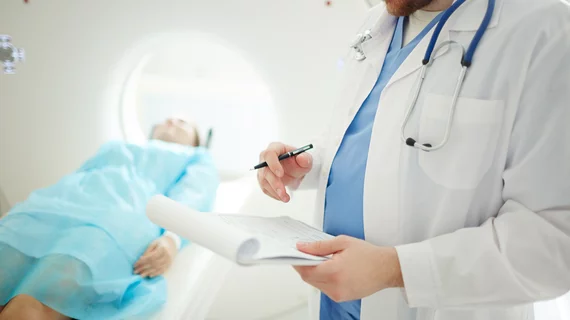CT should not be used as first-line tool against coronavirus, ACR warns following pandemic declaration
The American College of Radiology is urging physicians to only deploy computed tomography in very specific circumstances to assess coronavirus patients. And CT “should not be used” to screen for—or as a first-line test to diagnose—the virus.
ACR’s assertion comes the same day that the World Health Organization declared the COVID-19 outbreak a global pandemic. As of early Wednesday afternoon, there have been almost 122,000 cases of the disease, with 4,373 confirmed deaths. Another 66,000-plus individuals have also recovered from it.
With limited availability of viral testing kits and concerns about their specificity, some hospitals have taken to using chest x-ray or CT to assess patients with the virus. However, ACR urged radiologists to use extreme caution in this practice.
“To date, most of the radiologic data comes from China. Some studies suggest that chest CT in particular may be positive in the setting of a negative test,” the college noted in its March 11 statement. “We want to emphasize that knowledge of this new condition is rapidly evolving, and not all of the published and publicly available information is complete or up-to-date.”
ACR further noted that the Centers for Disease Control and Prevention does not recommend x-ray or CT to diagnose the coronavirus. Viral testing is the only specific diagnosis method, they wrote, with chest imaging lacking such specificity and overlapping with similar findings for infections including influenza, H1N1, SARS and MERS.
“Being in the midst of the current flu season with a much higher prevalence of influenza in the U.S. than COVID-19, further limits the specificity of CT,” ACR added, pointing to its practice criteria labeling such imaging as “usually not appropriate” for pinpointing acute respiratory illness.
The college also expressed concerns about the infection control challenges that COVID-19 patients could present by entering CT scan suites. Imaging rooms used by a patient suspected of having the virus need to be cleaned and decontaminated following each visit. Plus, ventilation and air flow are crucial after each encounter, the ACR noted.
“Depending on the air exchange rates, rooms may need to be unavailable for approximately one hour after imaging infected patients,” the college said in its statement. “These measures to eliminate contamination for subsequent patients may reduce access to imaging suites, leading potentially to substantial problems for patient care,” it added.
Given all of these factors, the ACR issued four specific recommendations for radiologists who are confronted with coronavirus:
- Do not use CT to screen, or as a first-line test, for COVID-19.
- Deploy computed tomography sparingly otherwise in the outbreak, reserving it for hospitalized, symptomatic patients with specific clinical indications for CT. “Appropriate infection control procedures should be followed before scanning subsequent patients,” the guidance added.
- Consider utilizing portable radiography units in ambulatory care facilities when chest x-rays are “considered medically necessary.” Surfaces on such machines are easily cleaned, and their use helps keep radiography rooms open for other patients.
- Radiologists must also familiarize themselves with the CT appearance of the coronavirus infection “to be able to identify findings consistent with infection in patients imaged for other reasons,” the guidance noted.
ACR has also compiled several resources on this topic for further reason and issued a new use case on the deployment of artificial intelligence to diagnose COVID-19.

